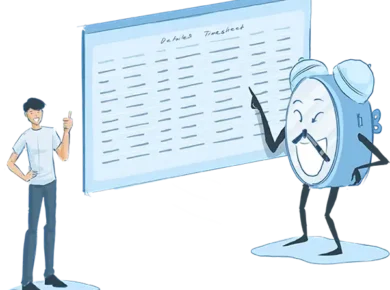Eisenhower Matrix, the famous productivity growth strategy, is a simple decision-making tool. It can be used by anyone at any time, can be applied immediately and has time-tested effectiveness.
With the help of the Eisenhower Matrix, you can easily determine the priorities of your tasks according to their urgency and importance. At the same time, it helps you to quickly identify tasks that should be delegated or left untouched.
How was created the Eisenhower Matrix
Eisenhower Matrix received its name after Dwight D. Eisenhower (October 14, 1890 – March 28, 1969) the 34th president of the United States (1953-1961)
On August 19, 1954, Eisenhower addressed the Second Assembly of the World Council of Churches, Evanston, Illinois. During his speech, he quoted a former college president and said “I have two kinds of problems, the urgent and the important. The urgent are not important, and the important are never urgent.”
This quote was later taken up and processed by Stephen R. Covey (October 24, 1932 – July 16, 2012), an American educator, author, businessman, and keynote speaker.
In his book The Seven Habits of Highly Effective People, which is a self-improvement book, the third habit is the one according to which one must “Put First Things First”
Putting first things first means organizing and executing around your most important priorities. It is living and being driven by the principles you value most, not by the agendas and forces surrounding you.
Stephen R. Covey
The basic principles of the Eisenhower Matrix
The Eisenhower Matrix functions as a decision matrix. This means that it allows you to categorize your activities according to their importance and urgency. This way as you make real progress in your life, you will also succeed to keep a good balance between your personal and professional life.

By organizing tasks in Eisenhower Matrix, you will get the following types of activities that are supposed to react properly:
- Important and Urgent: You will perform these tasks immediately
- Important but Not urgent: You will schedule these tasks to perform them later
- Not important but Urgent: As much as possible, try to delegate these tasks to someone else
- Not important, Not Urgent: You can quit doing these activities
Applying the Eisenhower Matrix step by step
Considering that
- Important activities are those that lead you to fulfill your purpose, both professionally and personally. They are accomplished through planning and organization
And
- Urgent activities require immediate action and come with clear consequences for not completing them but at some point, it becomes stressful if we only deal with them
Get your to-do list and frame your activities into the Eisenhower Matrix as follows:
- Important and Urgent: meetings, crises, client problems, health emergencies, last-minute deadlines, projects, pressing problems
- Important but Not urgent: planning, building relationships, regular chores, personal growth, learning, professional networking
- Not important but Urgent: some phone calls or emails, Interruptions by colleagues or family members, some requests, irrelevant meetings
- Not important, Not Urgent: games, social media, internet, TV, coffee breaks
There are a few things you might consider when working with the Eisenhower Matrix:
- Prepare a general to-do list to include all the activities you have to do
- Set for each quadrant of the matrix a maximum number of activities that you can frame
- Frames the activities from the to-do list in the matrix, each where it belongs
- Make your planning for the next day the night before
- Set time intervals in which you want to carry out certain activities
- Start your day with the most important activity
- Stay focused and avoid as much as possible any distraction from what you do
Benefits of using Eisenhower Matrix
From the beginning, you will organize yourself much better and work much more efficiently. The results will appear shortly because productivity will be greatly improved and this will be immediately reflected in revenues and profits.
In time, as you use the Eisenhower Matrix you will end up directing more and more priorities toward the section Important but Not urgent. This section increases your effectiveness and helps you to achieve remarkable professional and personal growth.






